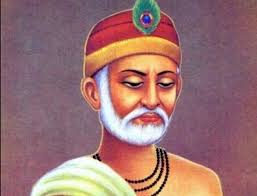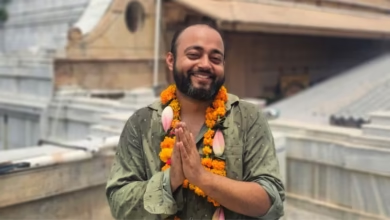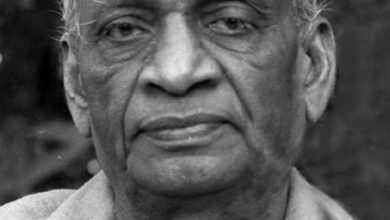Kabir Das Biography, Wikipedia, Personal Life, Career, Family, Net Worth, Death
Kabir Das was a 15th-century Indian mystic poet and saint whose teachings and verses have had a profound impact on Indian spirituality, literature, and social reform. He is revered by Hindus, Muslims, and Sikhs alike for his emphasis on the unity of God and the importance of personal devotion over ritualistic practices.
Profile
| Aspect | Details |
|---|---|
| Full Name | Kabir Das |
| Birth | 1398 |
| Birthplace | Varanasi (Kashi), Uttar Pradesh, India |
| Death | 1518 |
| Religion | Syncretic: Influenced by both Hinduism and Islam |
| Occupation | Mystic poet, saint, social reformer |
| Language | Vernacular Hindi (with Arabic, Persian, and Sanskrit influence) |
| Spiritual Guru | Ramananda (disputed but widely believed) |
| Major Beliefs | Monotheism, inner devotion, rejection of ritualism, equality of all |
| Famous Works | Bijak, Kabir Granthavali, Sakhi Granth |
| Influence | Hindu Bhakti movement, Sikhism (Guru Granth Sahib includes his hymns) |
| Legacy | Founder of the Kabir Panth sect; respected by Hindus, Muslims, and Sikhs |
| Known For | Dohas (couplets), social criticism, spiritual wisdom |
| Philosophy | God is one and formless; self-realization is the true path to the divine |
Early Life and Background
Kabir Das, a revered 15th-century Indian mystic poet and saint, was born around 1398 in Varanasi, Uttar Pradesh, India. The exact details of his birth remain shrouded in mystery and legend. According to one popular narrative, Kabir was born to a Brahmin widow who, fearing social stigma due to her unwed status, abandoned him. He was then found and adopted by Niru and Nima, a childless Muslim weaver couple, who raised him in their humble household. Another legend suggests Kabir miraculously appeared on a lotus leaf in Lahartara pond in Varanasi, discovered by Niru and Nima. Despite these varying accounts, it is widely accepted that Kabir grew up in a Muslim weaver family, belonging to the low-caste Julaha community. His upbringing in a diverse religious environment, coupled with Varanasi’s spiritual milieu, shaped his eclectic philosophy.
Kabir received no formal education and was not trained in weaving, yet his poetry often used weaving metaphors to convey spiritual truths. His lack of formal schooling did not hinder his intellectual and spiritual growth, as he displayed a profound curiosity about life’s deeper meanings from a young age. His exposure to both Hindu and Muslim traditions, along with the Nath yogi influences, contributed to his unique worldview.

Kabir Das Personal Life and Family
Kabir lived as a householder, valuing family life over asceticism, which he believed was not the true path to spiritual liberation. He married a woman named Loi and had two children a son named Kamal and a daughter named Kamali. His family resided in the Kabir Chaura locality of Varanasi, which remains a significant site associated with his legacy. Kabir’s teachings emphasized living responsibly within society, fulfilling familial duties while pursuing spiritual goals. He rejected the notion of renouncing worldly life for salvation, advocating instead for a balanced existence rooted in devotion and hard work. His home, now known as Kabir Math, serves as a center for learning about his works and philosophy.
Kabir’s spiritual journey was deeply influenced by his guru, Ramananda, a prominent Vaishnava saint. Initially, Ramananda was reluctant to accept Kabir as a disciple due to his low-caste status. According to legend, Kabir devised a plan to gain Ramananda’s acceptance by lying on the steps of a ghat where Ramananda bathed. When Ramananda accidentally stepped on Kabir and uttered “Ram,” Kabir took it as his initiation mantra. This encounter marked the beginning of Kabir’s formal spiritual training under Ramananda, blending Hindu Bhakti and Sufi elements into his philosophy.
Career and Contributions
Kabir Das is celebrated for his poetry, which profoundly influenced the Bhakti movement in Hinduism, Sikhism, and Sufism. His verses, written in simple Hindi with dialects like Braj, Awadhi, and Bhojpuri, were accessible to the common people. Kabir composed dohas (rhymed couplets), padas (songs), and banis (lyrical responses), often using vivid imagery and metaphors to convey spiritual and social messages. His works are compiled in texts such as Bijak, Kabir Granthawali, Sakhi Granth, and Anurag Sagar, and his verses appear in Sikhism’s Guru Granth Sahib.
Kabir’s poetry criticized organized religion, caste discrimination, and societal hypocrisy. He rejected ritualistic practices in both Hinduism and Islam, advocating for a direct, personal connection with a formless God, whom he referred to interchangeably as Ram or Allah. His philosophy centered on two spiritual truths Jivatma (individual soul) and Paramatma (universal soul) and he viewed moksha as the union of these entities through devotion and self-realization. Kabir’s emphasis on equality, humanity, and kindness resonated across religious and social divides, making him a unifying figure.
As a weaver by trade, Kabir used his profession as a metaphor for life’s interconnectedness, urging people to weave their lives with devotion and righteousness. His teachings inspired the formation of the Kabir Panth, a religious community that regards him as its founder. Kabir Panthis continue to spread his message of unity and spirituality across northern and central India.
Kabir Das Net Worth
There is no historical record of Kabir Das’s net worth, as he lived a modest life as a weaver and mystic. His wealth lay in his spiritual insights and the enduring impact of his poetry. Kabir rejected materialism, focusing instead on inner richness through devotion and ethical living. His legacy, preserved through his works and the Kabir Panth, is considered priceless in Indian cultural and spiritual heritage.
Kabir Das Death and Legacy
Kabir Das passed away in 1518 in Maghar, approximately 240 kilometers from Lucknow. He deliberately chose Maghar as his place of death to challenge the prevailing superstition that dying there would lead to reincarnation as a donkey, while dying in Kashi (Varanasi) ensured salvation. By dying in Maghar, Kabir sought to debunk such myths, emphasizing that true salvation comes from devotion, not location. According to legend, after his death, Hindus and Muslims disputed whether to cremate or bury his body. Miraculously, his body transformed into flowers, which were divided between the two communities for their respective rituals half cremated in Kashi and half buried in Maghar. This event symbolizes Kabir’s ability to bridge religious divides.
Kabir’s legacy endures through his poetry, which continues to inspire spiritual seekers and social reformers. His teachings on equality, devotion, and unity remain relevant, influencing modern Indian literature, culture, and interfaith dialogue. The Kabir Shodh Sansthan in Maghar promotes research on his works, and his samadhi and mazar in Maghar are revered pilgrimage sites.
READ ALSO: Bhagat Singh Biography, Wikipedia, Career, Family, Personal Life, Net Worth, Death
FAQs
Who was Kabir Das?
Kabir Das was a 15th-century Indian mystic poet and saint whose poetry influenced the Bhakti movement, Sikhism, and Sufism. He criticized organized religion and advocated for a personal connection with God.
What are Kabir Das’s major works?
His major works include Bijak, Kabir Granthawali, Sakhi Granth, and Anurag Sagar. His verses also appear in the Guru Granth Sahib.
What was Kabir Das’s philosophy?
Kabir believed in a formless God, equality among all people, and salvation through devotion and self-realization. He rejected caste, rituals, and religious dogmas.
Where and when did Kabir Das die?
Kabir died in 1518 in Maghar, Uttar Pradesh, to challenge the myth that dying there prevented salvation.
What is Kabir Panth?
Kabir Panth is a religious community founded on Kabir’s teachings, emphasizing devotion, equality, and a direct connection with God.
Was Kabir Das educated?
No, Kabir received no formal education but gained spiritual wisdom through his guru Ramananda and personal reflection.
Why is Kabir Das still relevant today?
His teachings on equality, unity, and devotion continue to inspire social reform, interfaith harmony, and spiritual growth in modern times.


